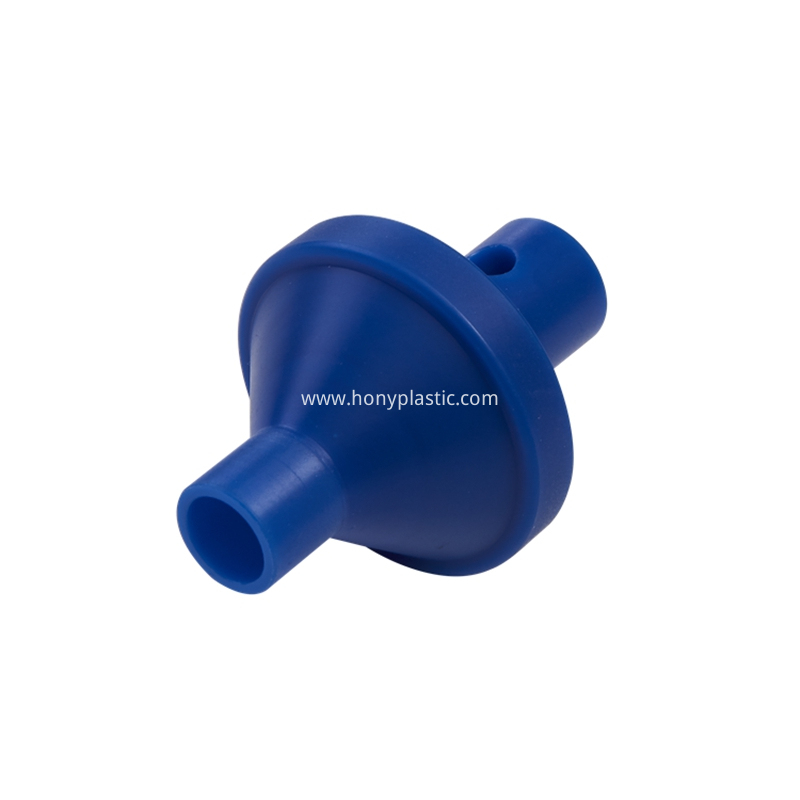
Privacy statement: Your privacy is very important to Us. Our company promises not to disclose your personal information to any external company with out your explicit permission.
Plastic Parts Selection Guide

In various industries, plastic parts are used more and more to replace non-metals such as copper, stainless steel, aluminum and ceramics. Reasons for the popularity of plastics, such as:
◆Longer service life of partsNowadays, there are many types of plastics, and it is very important to choose a suitable plastic. The following guidelines can help you increase your familiarity with plastic products and achieve better material selection.

1. Determine the function of the component you need.
In bearing and friction applications, crystalline materials (nylon, polyoxymethylene) are better than amorphous materials (such as polysulfone, PEI or polycarbonate).
Friction performance can be enhanced by molybdenum disulfide, graphite, carbon fiber and polymer lubricants (such as PTFE, wax).
Structural performance can be enhanced by reinforcing fibers, such as glass or carbon.
Once you have decided on the function of the component (bearing friction or structure), you can further narrow the selection by determining the mechanical characteristics requirements. For bearing and friction applications, the primary consideration is friction performance, and the main viewing parameters are PV value and "k" wear factor. Calculate the required PV value (pressure (psi) x speed (m/min)). Select the material whose PV value exceeds the value you calculated; then, reduce the material range according to the "k" wear factor. Generally speaking, the lower the "k" factor, the slower the material wears and the longer the life.
The maximum continuous working pressure of structural parts at a specific temperature is generally designed to be 25% of its ultimate strength.
2. Consider the heat resistance requirements of components from both standard and extreme conditions.
The heat resistance of the material is described by the heat distortion temperature (HDT) and the continuous working temperature. HDT is an indicator of material softening temperature, generally used as the highest temperature under medium and high stress. Continuous working temperature generally refers to long-term exposure above this temperature, the physical properties of the material will undergo significant and permanent degradation.
The melting point of crystalline materials and the glass transition temperature of amorphous materials are the short-term temperature limits that can maintain stable morphology. Most engineering plastic products should work below these temperatures, because the polymer will lose most of its mechanical properties at these temperatures.
3. Consider the chemicals used when the materials are used and cleaned.
Consider that concentration, temperature, time and stress are all factors that affect the suitability of the material. Nylon, polyoxymethylene and PET-P are generally suitable for industrial environments. Crystalline high-performance materials such as reinforced PTFE, PPS and PEEK are more suitable for use in highly corrosive chemical environments. It is strongly recommended that you perform the test under the end-use conditions.
4. Other characteristics of materials should be considered when selecting materials, including:
Impact resistance, toughness, dimensional stability, compliance with regulatory agency regulations. Materials with higher elongation, impact strength and tensile strength are generally stronger and less sensitive to notches.
5. Determine the machining capability of the selected material.
Machining ability is also a criterion for material selection. Choose stress-relieved materials to improve machining capabilities. Generally speaking, glass and carbon-reinforced products are more sensitive to tool friction and notches during machining than unfilled products. Enhanced products are generally more stable during machining.
Because of their extremely high hardness, cyclized materials (such as PAI, PI and PBI) will be extremely challenging to process. In the machining process of these materials, cemented carbide and polycrystalline diamond tools should be used.
6. Choose the most cost-effective profile:
Please be sure to study all the profile possibilities-find the most economical profile in order to reduce the cost.
November 15, 2024
November 14, 2024
August 27, 2021
August 26, 2021
PEEK ball is a special type of ball made of polyether ether ketone (PEEK), which has excellent chemical stability, abrasion resistance, and high temperature resistance.PEEK ball is widely used in...
PVDF Application Areas Different models of PVDF products are suitable for different application scenarios. According to application fields, PVDF can be divided into conventional grade products and...
Application Performance Advantages of MC nylon MC nylon is a new type of engineering plastics, due to its outstanding comprehensive performance, so that its status in engineering plastics is rapidly...
Types of nylon: 1. Nylon - 6 (PA6) Nylon -6, also known as polyamide -6, that is, polycaprolactam. Translucent or opaque opalescent resin. 2. Nylon - 66 (PA66) Nylon-66, also known as polyamide-66,...
Email to this supplier
November 15, 2024
November 14, 2024
August 27, 2021
August 26, 2021

Privacy statement: Your privacy is very important to Us. Our company promises not to disclose your personal information to any external company with out your explicit permission.

Fill in more information so that we can get in touch with you faster
Privacy statement: Your privacy is very important to Us. Our company promises not to disclose your personal information to any external company with out your explicit permission.